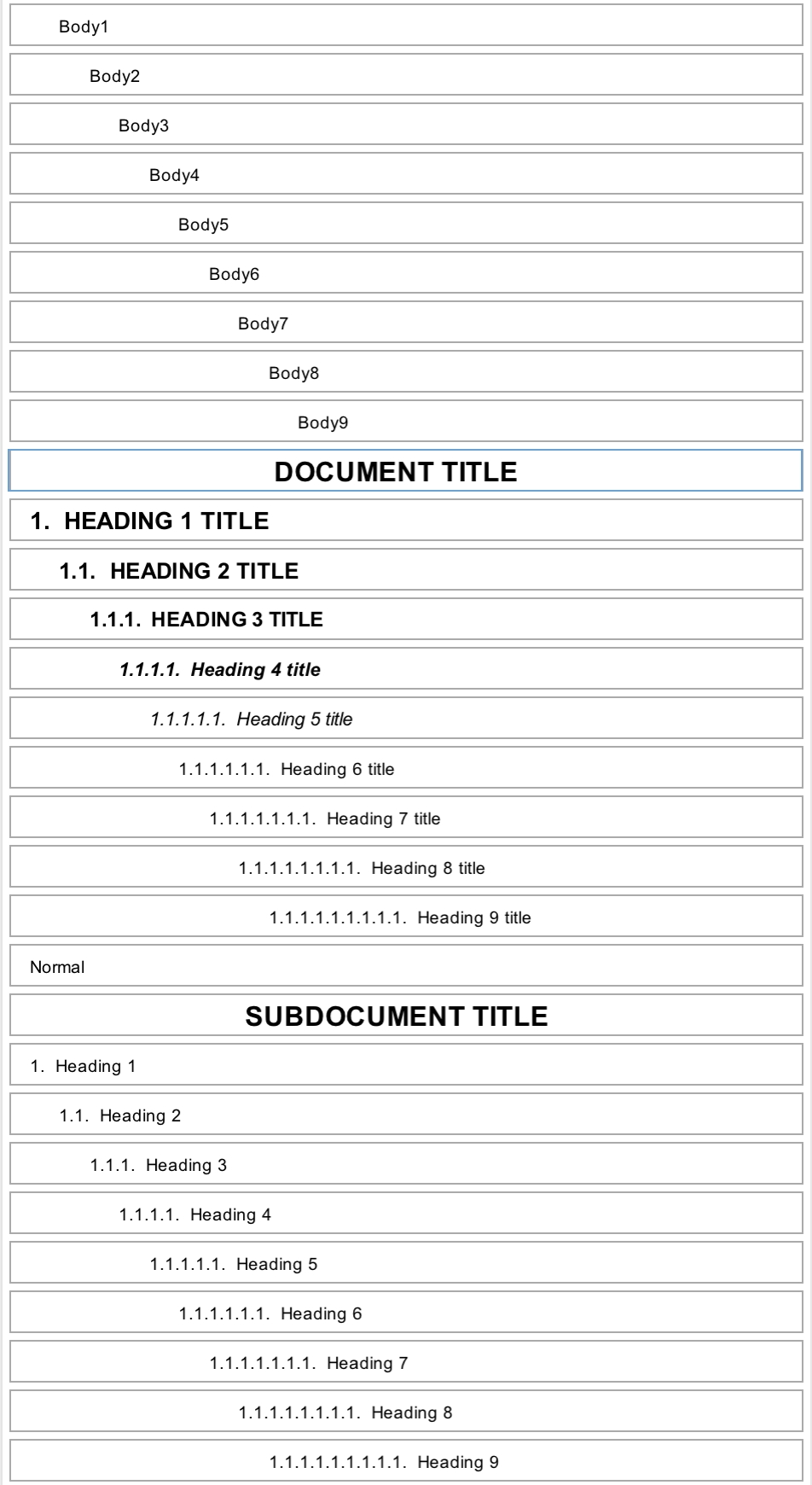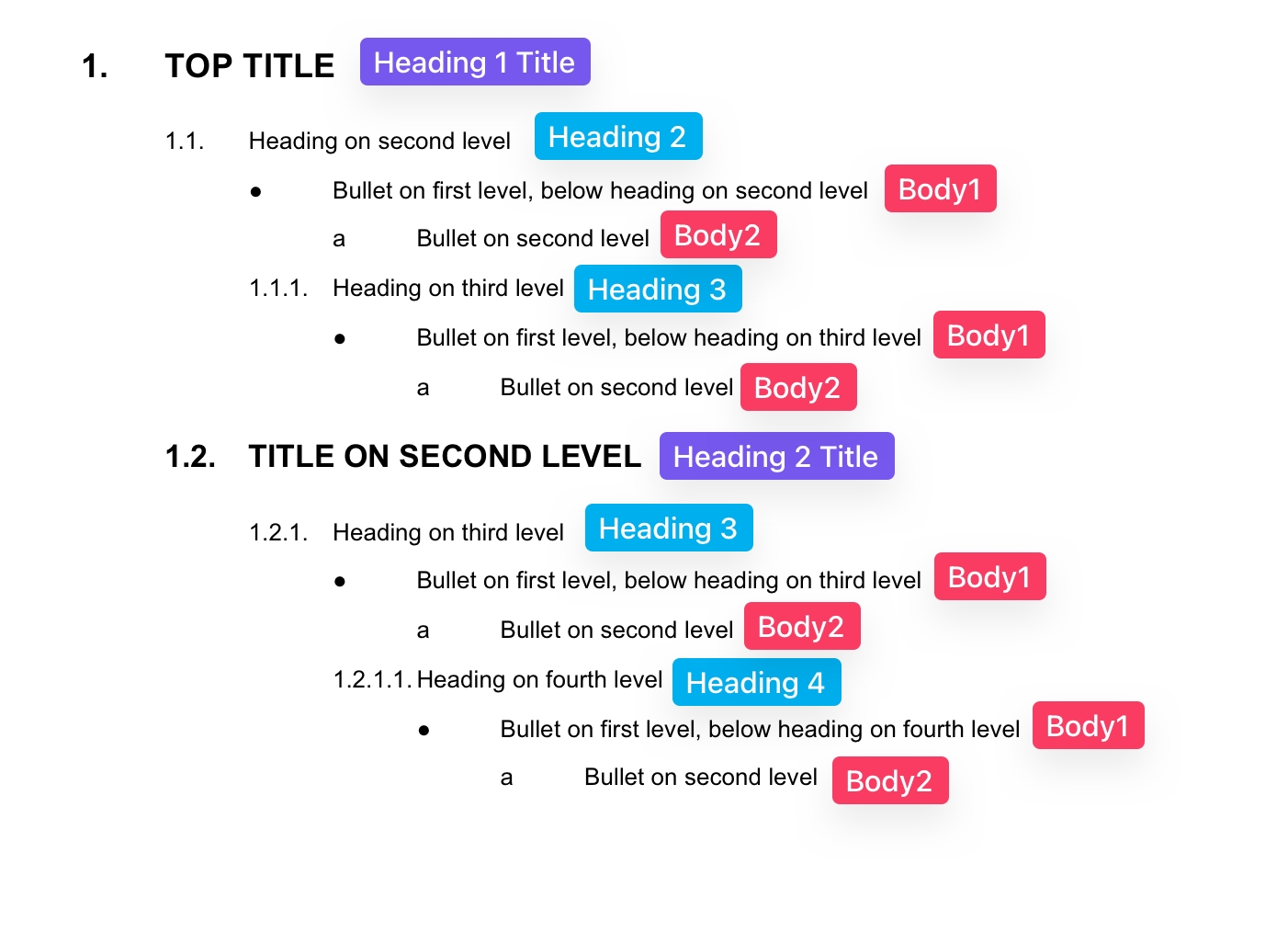ClauseBuddy layout structure
ClauseBuddy (and Clause9) offers a refined layout structure, that is probably be much more flexible than your house style in some areas.
Essentially, the ClauseBuddy layout structure is subdivided into nine different levels. On each level, you can encounter a title style (typically bold and/or coloured), a heading style and up to nine different body styles. Each title and heading can have a number, while each body paragraph can optionally have a bullet. Finally, there is also a separate style for the title of the (sub)document itself.
ClauseBuddy's Word style structure thus look as follows:

Note that the set of nine body styles is used below each of the title/heading styles, although the indentation can differ. The underlying idea is to have a consistent approach towards bullets, so that if (for example) the first level of bullets is a filled circle and the second level of bullets is (a) (b) (c), those two types of bullets are always used in such way, whether below top-level titles/headings, or instead sub-sub-sub titles. Example:

Last updated